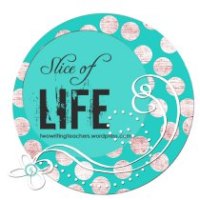
I’ve been largely absent from Twitter and blogging for the past week or so. The swirl of end-of-the-year activities and responsibilities, plus helping my niece get ready for a bridal shower she hosted on Saturday, demanded my full attention. But today is the last official teacher day (kids finished last Friday) and it’s the first day of Teachers Write, a fabulous online summer writing camp for teachers and librarians hosted by Kate Messner and friends. So it seems appropriate to kick off this summer of writing by setting some goals. Goals and objectives are nothing new in education, but lately it seems like they’re the new black.
Last summer I followed the posts and prompts at Teachers Write and I did a fair amount of writing in my journals. But I didn’t share a lot online. This year, I hope to share more of my writing here. Notice I said hope. I am my own worst critic. I want my writing to be perfect the first time I write it. I know this never happens. I’ve read countless writing books and interviews with authors reassuring fledgling writers that first drafts are always terrible. I also know that I am not the only person who feels this way, as many of the comments on the Teachers Write Facebook page say pretty much the same thing. Allowing myself to just write is something I’ve gotten better at, but I still have a long way to go.
While I’m posting some of this writing, I’d like to improve my blogging skills. After a year and a half, there are still some technical details related to my blog that I’d like to master. A friend told me to move my picture to the top of the page, but I have no idea how to do this. Sometimes a picture stays where it landed because I can’t figure out how to move it.
Another goal I have is to keep a regular writing schedule. This has gotten easier for me over the past few months. Participating in the March Slice of Life Challenge at Two Writing Teachers really helped me with this. There are days, however, when life intervenes and not a word is written.
And that brings me to my final goal: Not to worry. If I don’t I polish up that picture book draft from 2004 or turn it into an early chapter book, it will be waiting for me next year. If I don’t post some writing one day, I will the next. Any writing I do is an accomplishment. Going through this process helps me clarify my thinking. It also provides me with tips and tools to share with my students when they are stuck. Most importantly, being a writer makes me more empathetic to my students as they struggle to find an idea, a word, a voice.
Dr. Thomas McMorran, Connecticut’s Principal of the Year for 2012, was the speaker at my school’s Eighth Grade Graduation last Friday evening. His speech was witty, down-to-earth, and full of wisdom. He stressed the importance of caring for one another and being fully present in our daily lives. McMorran urged everyone to “Be here, right now.” This summer, I hope to do just that: to be here, with all of you, writing and learning together.
A huge thank you to Kate and all the authors who will be participating in Teachers Write this summer!


















